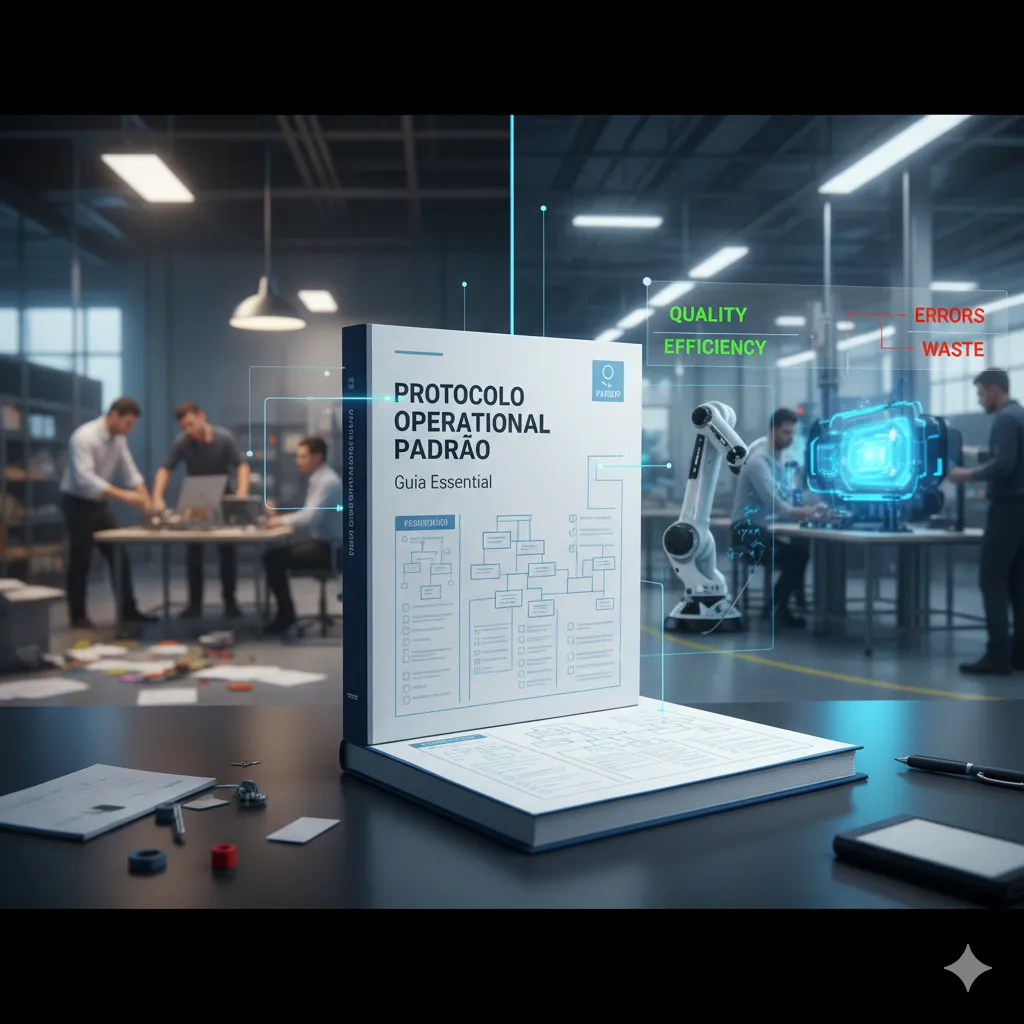The success and consistency of any organization, whether a small business or a multinational corporation, depend on the correct and uniform execution of its tasks. This is where the Protocolo Operacional Padrão—or POP—comes in, a crucial tool for quality management and operational efficiency.
But what exactly is this document, and how can it transform your business’s routine?
What is a Protocolo Operacional Padrão?
The Protocolo Operacional Padrão (POP), which translates to Standard Operating Procedure (SOP) in English, is a detailed manual that documents the step-by-step process of a specific activity or procedure within an organization. It serves as a standardized roadmap for performing routine tasks.
Think of it as the “recipe” for your company. Just as a recipe ensures a cake always comes out with the same flavor and texture, the POP ensures that a task, regardless of who executes it, is done the same way, following the same quality and safety criteria.
The primary goal is to eliminate variability and subjectivity in task execution, ensuring:
- Uniformity: All activities are performed consistently.
- Quality: The final result meets established standards.
- Safety: Risks are minimized through clear procedures.
Why is the SOP So Important?
Implementing an SOP brings numerous benefits that directly impact productivity, quality, and the work environment.
✅ Consistency and Quality
By standardizing the work method, you ensure that products or services maintain a high level of quality. Inconsistency is one of the greatest enemies of customer satisfaction; the POP combats it directly.
✅ Reduction of Errors and Waste
Clear instructions prevent employees from making mistakes due to lack of knowledge or incorrect interpretation. This translates into less rework, less waste of materials and time, and consequently, savings for the company.
✅ Simplified Training and Onboarding
The POP is an exceptional training tool. New employees can learn tasks quickly and efficiently by consulting the document instead of relying solely on the supervision of colleagues. It facilitates ‘onboarding’ and ensures that knowledge is not restricted to a few individuals.
✅ Safety and Compliance
In regulated sectors (such as food, healthcare, or pharmaceutical industries), the POP is essential for legal compliance. It documents safety measures and mandatory steps, helping the company meet norms and certifications, like ISO 9001.
✅ Foundation for Continuous Improvement
With documented processes, it becomes much easier to identify bottlenecks and areas for improvement. The POP is not a rigid document; it is the foundation for the evolution of processes. If a step isn’t working, it can be revised, and the POP updated.
How to Develop a Standard Operating Procedure (Step-by-Step)
Creating an effective SOP (or Protocolo Operacional Padrão) is not a complicated process, but it requires attention to detail and collaboration from the teams actually performing the task. Follow these steps:
1. Define the Scope and Objective
- Which process will be standardized? (E.g., Equipment cleaning process, customer service procedure, inventory check).
- What is the expected result? (What do you hope to achieve with the correct execution of this SOP?).
2. Identify the Involved Parties
- Who is responsible for the drafting? (Usually, a quality professional or the area supervisor).
- Who are the executors? (The people who will perform the task).
- It is crucial to involve the executors in the writing, as they know the routine in practice.
3. Map the Process Steps
Describe the activity step-by-step, in the correct chronological order, from start to finish. Use clear, objective language and direct commands (action verbs).
- List what should be done (Action).
- Specify the necessary materials and equipment.
- Include checkpoints or decisions to be made.
- Include evidence: What proves the task was completed? (E.g., Photo, signature on a checklist, system record).
4. Structure the Document
An SOP must have a formal structure to facilitate consultation and management. Essential elements include:
- Title: Name of the Procedure (E.g., SOP – Production Area Sanitization).
- Code/Revision: An identification number and the current version number.
- Objective: What the procedure aims to accomplish.
- Responsibilities: Who should execute and who should supervise.
- Definitions: Clarification of terms or acronyms used.
- Materials/Equipment: List of everything needed.
- Flowchart (Optional, but Recommended): A visual representation of the steps.
- Procedure: The detailed step-by-step instructions.
5. Validation and Implementation
The POP needs to be tested!
- Validate: Ask employees to perform the task following the draft. Adjust the document based on practical feedback.
- Approval: The final SOP must be formally approved by a manager.
- Training: Train all involved employees on the new version of the SOP.
- Availability: Make the document accessible (printed at the workplace, in digital folders, or via management applications).
By mastering the creation and implementation of the Protocolo Operacional Padrão (POP), your organization will be one step ahead in the pursuit of operational excellence and customer satisfaction.



